Scroll down for FULL DESCRIPTIONS OF ALL OUR CASK BEERS this year and photos from the event:
Important ACAT Festival Notes:
- WEAR YOUR BEADS. These are required for entry and for being served.
- ALLERGENS: Some beers contain nuts and other allergens. Check the descriptions below and ask servers to be certain.
- Ribbons for 1st, 2nd & 3rd place Avant-Garde and Classic-Style casks will be posted on casks at 4 PM. Festival attendees can use the link below to vote for People's Choice cask.
- Floors are wet - please use constant caution.
- Don't drink and drive! Use Uber and Lyft.
- Attendees get 10% off delicious food items at Bold Monk today!
- Beers are subject to change without notice. ACAT code of conduct is posted at the bottom.
CLICK HERE to vote for your favorite cask before 5 PM on festival day. Use the unique six-digit passcode from your blue ticket to vote.
THESE 20 CASKS LOCATED IN THE FOEDER ROOM NEAR THE BREWERY:
01. Arches I’m Not Bitter, You’re Bitter ESB. This 5.1% ABV ale comes across as a
well-balanced, sessionable, traditional English-style bitter. Look for earthy,
herbal English hops balanced with light bread and cracker notes from domestic
and English malts.
02. Athentic Brewing Company Cask-Hopped Wide
Open IPA. Athentic pulled
a fresh cask of Wide Open IPA near the end of fermentation and cask-hopped it
with Simcoe, Rakau, Denali and X10416 hops to complement the X1019 and Citra
hops of the base beer. The result is a perfect marriage of piney and citrusy
fruit notes with a touch of dankness and a smooth, satisfying finish.
03. Bagby Beer Company Three Beagles. This mouth-watering English-style brown ale from
one of California's best breweries weighs in at 5.3% ABV and delivers elegant dark
malt flavors and aromas with just enough hops for balance. Quite easy-drinking
and not sweet or cloying, it's just enjoyable.
04. Beacon Brewing Weiss Guys Dunkel
Weizenbock is a 7.5% ABV German-style
strong dark wheat beer that offers a complex bouquet of esters and phenols from
the German weizen yeast, coupled with a bready malt backbone from copious
amounts of locally malted wheat and German Munich malt. Notes of freshly baked
banana bread, dark fruit, and a hint of caramel also come through.
05. Blackbird Farms Customer Entitlement is an American Pale Ale with appealing aroma,
flavor, and bitterness from additions of Citra and East Kent Golding hops. 6%
ABV.
06. SECOND PLACE CLASSIC STYLE: Bluejacket Company Porter (East India Porter) is our interpretation of
the 1858 Whitbread Contract Porter brewed in collaboration with beer historian
Ron Pattinson. Company Porter is heavily hopped with East Kent Goldings to punctuate
malt-driven coffee, bread crust, and cocoa flavors with notes of tea, citrus,
herbs, grass, and lavender. This remarkable 6.2% ABV dark brew finishes earthy
and dry, with a pleasant lingering bitterness.
07. Bold Monk Prophets of Hope is a 12.7% ABV bourbon barrel-aged barleywine
brewed with select English malts, fermented in stainless steel, and aged in Prichard’s
bourbon barrels for eight months. It boasts a full, malty body that's supported
by a firm addition of hops for balance. The ale pours with a deep reddish brown
hue and a light brown head. With intense notes of malt, charred oak, bourbon,
hints of cherries and dark fruit, this beer will hold up to time’s test.08. PEOPLE'S CHOICE FAVORITE CASK: Cherry Street / Lincoln Fill Station Maui
Delight is an 8% ABV
imperial porter that was aged in a Buffalo Trace bourbon barrel. This cask
contains additions of toasted coconut, macadamia nuts, grilled pineapple, and
Kona coffee. One sip and you'll be transported to winter break in Hawaii! (Our
annual cask collaboration with our friends at Lincoln Fill Station in
Snellville.)
09. Cherry Street Berries of the Sword Baltic
Porter is our 9% ABV big and bold Baltic porter
(Brothers of the Sword) infused with a blackberry, blueberry, and raspberry
reduction. Roasty chocolate notes mingle with sweet, rich fruits for an
indulgent cask experience.
10. Close at Hand Brewing Flex & Pretend
Saison is a dry, rustic farmhouse ale built
with pilsner malt, a substantial dose of spelt and rye, and paired with a
lovely blend of turmeric, ginger, and lemon peel. It offers a warm,
invigorating aroma with bright, earthy, citrus and clove notes on the palate
with a punch of ginger. Decidedly versatile, it’s a beverage just as at home in
the heat of summer as around the family table during the holidays. (A collaboration
with Normaltown Brewing.)
11. Cøntrast Artisan Ales Double Chocolate Big
Poppa Imperial Stout. Big Poppa,
the base beer of our beloved Hypnotize Biggie Bourbon Barrel-Aged Imperial
Stout, was cask-conditioned on delicious Costa Rican cacao to create a decadent
layering of deep chocolate flavors. Layers and layers and layers, oh my! 10.1%
ABV.
12. Creature Comforts Winter Trees Cold Red
IPA. Innovation and nostalgia abound in
this 7.1% ABV beer. We believe this to be the first Cold Red IPA, meaning it is
brewed with rice and corn, fermented with lager yeast, and possesses a strong
malty backbone complemented by piney hops and toasty malts.
13. SECOND PLACE AVANT-GARDE: Cultivation Brewery Simple Habits. This 8.5% ABV Belgian-style imperial IPA was
generously dry-hopped with Nelson Sauvin hops. It offers a balance of fruity notes
and herbal spices from the Belgian yeast, rounded out by the light honey sweetness
of the malt. The aroma is a complex mix of white wine and gooseberry from the
New Zealand hops.
14. Elsewhere Brewing Blank Czech comes from a collaboration with brewer
friends Piece Brewery from Chicago and Five Wits Brewery in Chattanooga. Staropramen yeast, pilsner malt, Carared malt
and Saaz hops make for a light and drinkable Czech-style amber lager. This cask
contains a hop plug of Mt. Hood for a nice resinous finish. ABV: 4.7%, IBUs:
20.15. Eventide Brewing Cinnamon Bun Kattegat Baltic Porter was conditioned with
cinnamon, brown sugar, and vanilla beans. The 7.0% ABV dark beer offers a
creamy medium/full body with an outstanding flavor profile from the dark malts and
adjuncts.
16. Gate City Brewing Company Fuego Lager provides a spicy twist to our popular 4.3%
ABV Gate City house lager. We dosed this cask with a special blend of peppers
for a mild, firey kick.
17. FIRST PLACE CLASSIC STYLE: Good Word Brewing Digital Comforts is a classic English-style Best Bitter coming
in at a sessionable 3.8% ABV. For such a light alcohol content, this elegant
pub ale packs layers of subtle UK malt and hop character.
18. Highland Brewing's Nutz & Voltz Coconut Coffee Porter is a harmonious blend of rich flavors, featuring the tropical essence of coconut seamlessly intertwined with the robust notes of freshly brewed coffee. The infusion of vanilla adds a velvety smoothness. With every sip, the coconut and coffee dance on the palate, elevated by the subtle sweetness of vanilla, delivering a uniquely delightful brew that captures the essence of a tropical morning in a glass. 5.8% ABV.
19. Hop Atomica Bronze Goddess. A classic doppelbock, this adjunct-free 8% ABV malt bomb was brewed with Munich and Pilsen malts and kissed with Magnum hops. Expect aromas of carob, caramel, chocolate, and a touch of plums and dark stone fruit. It is oh-so malty with sweet, yet well-attenuated, flavors of dates, toffee, and Raisinettes. That's some good bread!"
20. Hopstix Yasuke is our take on an international dark lager. We started with a foundation of Continental pilsner malt and roasted Chinese sweet black rice. A healthy amount of Spalter Select hops combined with the malts to form a clean and crisp 5% ABV dark lager with sweet toasted rice and coffee nuances.
THESE 20 CASKS LOCATED UPSTAIRS IN THE LIBRARY ROOM:
21. Jekyll Brewing Southern Juice IPA. Our 6.3% ABV Southern Juice IPA ranks as one
of our year-round offerings that boasts a nice citrus and piney dank aroma from
Citra and Simcoe hops. This cask received our usual dry-hop treatment and was
then conditioned on fresh sumo mandarin oranges and a hefty dose of additional
Citra hops.
22. Khonso Brewing No Scrubs. This Wheatwine does not have time for those
sitting on the passenger side of their best friend's ride. No Scrubs is made
with 75% wheat malt, along with some traditional malts for a subtle sweetness.
Pecan extract provides a subtle nuttiness, and Liberty and Paradigm hops
contribute hints of hoppy spice. With an ABV of 9%, No Scrubs is the next
crossover hit.
23. Liquid Nation Second To None E.S.B (Extra Special Bitter). This 5.0% ABV
traditional English strong bitter performs a nice balancing act between hop
bitterness and malt toast taste, with caramel sweetness coming through
mid-palate, before drying to a clean and pleasing hoppy finish.
24. Lost Druid Shrewd Speculation Wheatwine. Deep gold, tilting to light amber in color,
this 11% ABV heavily wheated ale presents an aroma of complex fruitiness
dominated by golden raisins and white grapes. The same fruits, along with a
touch of apricot esters, hit the front of the palate with sweet effervescent vigor,
followed by subtle caramel and honey notes in the middle. The beer finishes
slightly drier, with a wisp of tartness and moderate alcohol.
25. Magnanimous Brewing ZURG Czech-Style Pale Lager is a 4% ABV lager using 100% floor malted Bohemian pilsner malt and Saaz hops. This beer offers refreshing, yet complex, notes of pilsner malt, lightly toasted bread, and beautiful hop character arising from generous additions of floral/spicy Czech hops.
26. MAZURT Rum Barrel-Aged Unfocused
Reflections of Matter: Elders Edition.
As the Elders were hiking to Machu Picchu drinking the local hot cocoa, they
were surprised by the rock star on the trail. In the confusion, the rock star
spilled his drink into the hot cocoa. Coffee and rum tasted great with the
cocoa! This Imperial Stout was aged in Independent Distilling rum barrels, and
then rested on Machu Picchu cacao nibs and Kenyan coffee beans. (A
collaboration with Bold Monk.)
27. FIRST PLACE AVANT-GARDE: Monday Night Choculus Pecan Pie is a 10% ABV Imperial Stout rested on cocoa nibs,
vanilla beans, and locally sourced Georgia pecans. The resulting flavor is
delicious, slightly roasted, and nutty. This ale is served still to amplify the
decadent stickiness of this delightful stout.
28. Monkey Wrench Brewing Pipe Wrench Stout. This easy-drinking 6.3% ABV dark ale
includes Maris Otter and chocolate malts plus flaked and roasted barley, which bring
out espresso, toffee, and rich chocolate flavors. Oak chips soaked in bourbon
for four weeks were added to impart woody and vanilla notes.
29. Moon River Captain's Porter is our 6% ABV porter with special additions
of cocoa, cinnamon, cayenne, and vanilla beans that enhance the already rich,
full-bodied brew that is our porter. Think "Mexican hot chocolate."
30. New Realm 1800’s XXX English Mild. Inspired by recipes from Ron Pattinson’s book
The Homebrewer’s Guide to Vintage Beer,
this recipe is a historical nod to the stronger mild ales from England in the 1800s.
This cask was brewed with English Mild Ale malt and Maris Otter malt, fermented
with London Ale yeast, and weighs in at 8.8% ABV.31. NoFo Brew Co. Dapper Don's Pecan Porter rested for three months in a NOFO Apple
Brandy barrel. Expect notes of figs, brown sugar, caramel/toffee, vanilla, and
oak. 6% ABV and 18 IBUs.
32. Normaltown The Mild Midwinter is a 3.8% ABV UK-style dark mild ale brewed
with classic British base malt, crystal, brown, and a touch of chocolate rye
malt for an intriguing twist on a classic, elegant style of ale.
33. Red Hare Streaking Through the Quad is a 10% ABV Belgian-style quad aged in a Red
Hare Rum Barrel. Look for strong caramel and prune flavors followed by notes of
oak and a smooth rum finish. Be careful,
or you might actually end up streaking through the quad.
34. Round Trip Brewing Krüsch on Nelson. Instant Krüsch, a New Zealand hopped Kolsch,
is a collaborative effort between Round Trip and Victory Brands. For ACAT, we
took freshly fermented Instant Krusch and added an elevated level of Nelson
Sauvin hops to the cask that was conditioned with a small dose of freshly
fermenting IPA.
35. Schoolhouse Brewing 70's Bushel is an 8% ABV double IPA that starts with a
prominent hop aroma. This big brew delivers flavors of citrus, tropical fruit,
and melon, along with piney resin notes. Brewed with West Coast yeast and
hopped with heaps of Mosaic, Simcoe, Citra, Centennial, Chinook, and Sabro.
36. Service Brewing Company The Big Churro is a bourbon barrel-aged blonde pastry stout
brewed with cinnamon, vanilla and cacao and then aged for eight months in Barton
1792 and Wild Turkey barrels. A boozy dessert beer with bold doughy notes of
cinnamon sugar with a smooth blend of vanilla and bourbon.
37. Good Word Brewing Analog Life English Dark Mild. This 3.6% UK session ale is brewed with intention and a focus on the classic style. Rich malt character, dark fruit and light chocolate highlight this balanced and extremely drinkable classic ale.
38. Six Bridges Brewing's Time Out of Mind is a 10% ABV barleywine made with Crisp
Heritage #19 Maris Otter malt and finished on oak from Six Bridges' own house
rum. The beer name comes from a groovin' Steely Dan song. Take some time out of
mind while enjoying this flavorful barleywine.39. Social Fox Brewing Oot Yer Face Wee Heavy. This 8.2% ABV strong Scottish ale was brewed
using traditional methods. The dark brown (almost black) ale offers a rich caramel
flavor with notes of semi-sweet chocolate, roasted hazelnuts, and cold brew
coffee.
40. Southern Brewing Smooth Operator comes in as a potent 9.5% ABV imperial stout
with impressive mouthfeel and dark malt complexity. Peanut butter and
raspberries were added to this exclusive ACAT cask for additional layers of
flavor.
THESE 13 CASKS LOCATED IN THE BREWERY:
41. STATS Brewpub Albatross IPA is a West Coast-style IPA with mango and
serrano peppers added to this exclusive cask. Expect a firm malt backbone,
complemented by generous hops and a pleasant fruit/capsaicin note. 6.7% ABV.
42. THIRD PLACE AVANT-GARDE: Steady Hand Puffy Monkey Milk Stout is a 6.5% ABV milk stout base brewed for our
seasonal release, Puffy Jacket. Puffy Monkey is a traditional milk stout aged
on Bananas Foster coffee.43. THIRD PLACE CLASSIC STYLE: StillFire Brewing Suwanee Claus Imperial
Doppelbock is a 12.1% ABV special
beer brewed only once a year on December 6. It's lagered for the entire year
until the next batch to replace it is again brewed on St Nicholas Day. Extremely
complex, it comes across as malty, yet smooth and drinkable due to the extended
aging. Enjoy a little late Christmas cheer!
44. SweetWater Brewing 3rd Time is a Charm is a delicious and surprisingly easy-drinking
10% ABV dry stout with dark chocolate, roasty flavors, and a hint of coffee. This
delicious brew marinated in a barrel that previously aged whiskey. Prior to
this, the barrel contained port wine. Expect complex flavors of berries,
caramel, almond, vanilla and green peppercorn.
45. Terrapin Double Secret “Hazy” Probation is a 9% ABV imperial hazy IPA that was hopped
generously with Amarillo in the boil, then double dry-hopped with Sequoia,
Setiva and Zamba hops for a big, juicy flavor and aroma that will definitely
keep you off the Dean’s List.
46. Three Taverns Old Bones. Inspired by our passion for classic English
pub-style beers, we took the concept of an English Old Ale and brought the ABV
down to a sessionable 5.0%. Old Bones is a delightfully simple, yet subtly
complex beer, brewed with a blend of floor-malted Maris Otter malt, medium
English crystal malt, black malt, and a touch of flaked wheat. Notes of toffee,
freshly baked biscuits, black cherry, and molasses come through, along with stone
fruit esters from the English yeast.
47. Torched Hop Anthem of the Angels Coconut
Porter. This 6.2% ABV Robust Porter was aged
on toasted coconut flakes post-fermentation. Additional coconut was added to
the cask. Notes of coconut and dark chocolate leap from the glass.
48. Twain's Break the Wheel English Dark Ale is a 4.9% ABV nod to classic British brown
ale. While all the hype may lie in lagers and IPAs these days, this nutty,
chocolatey, and toasty dark ale is really what the beer-drinking soul needs on
a cold winter's day. Ingredients: English Maris Otter, crystal malt, chocolate
malt, UK Fuggle and East Kent Golding hops, and expressive English yeast. It's
adjunct-free, just as it oughta be.
49. Variant International Taste Station. This special version of our 10% ABV Imperial
Stout was conditioned in the cask on toasted coconut, vanilla, cacao nibs, maple,
and coffee for outstanding layers of complexity.
50. Wild Heaven Big Baby Cakes. Big Baby Cakes is a Bulleit barrel-aged
Russian Imperial Stout filled with the flavors of a classic Mardi Gras king cake.
Milk chocolate and espresso pair with sweet cinnamon and creamy vanilla with
bourbon oak undertones. No plastic baby included.
51. Wrecking Bar Brewpub's Me Want Oatmeal Cookie
Porter. This is our malty English brown porter
aged on cognac and rum-soaked golden raisins, cinnamon and vanilla.
52. Bold Monk Rejoice! Celebratory Ale is our 8.9% ABV anniversary tripel brewed with hibiscus, sweet orange peel and raspberries. The beer pours a beautiful deep red color with luscious tropical notes of citrus and rose petals, along with the tart sweetness of raspberries - all supported by fresh hops.
53. Khonso Sugar Foot Stomp. Get ready to let your doggies romp while enjoying this dark brown barleywine made with copper malt, cold brew coffee and a vanilla bean for a subtle sweetness. Galena & Mandarina Bavaria hops join the party for a hint of fruitiness. With an ABV of 10%, Sugar Foot Stomp is a new classic that'll get you high-stepping. "Sugar Foot Stomp" is a 1925 jazz song by the Fletcher Henderson Orchestra.
CLICK HERE to vote for your favorite cask before 5 PM on festival day. Use the unique six-digit passcode from your blue ticket to vote.
ACAT CODE OF CONDUCT: ACAT is dedicated to a harassment-free festival experience for everyone, regardless of gender, age, sexual orientation, disability, physical appearance, race or religion. We do not tolerate harassment in any form. All communication should be kind, appropriate and inclusive for all audiences, including people of diverse backgrounds, sexual orientations and cultures. Sexual language, harassment and imagery are never appropriate. All festival participants are expected to conduct themselves with responsibility, integrity, courtesy and respect for others. Participants violating these rules will be asked to leave at the sole discretion of the festival host and/or organizers. Thank you for respecting these important rules.
Photos from our 2024 ACAT by Mary Fiorello, Ale Sharpton, and Ginger Atteberry.
 Women of Beer:
Women of Beer: Zac started brewing after he married Cari in 2009. Cari reflects, “He was instantly hooked. I would assist on brew days, and when Zac eventually told me that he was put on earth to brew beer, I knew he had to follow his dream, and I wanted to help cultivate this. In 2014, we realized our vision in the form of a 14,000-square-foot craft beer facility in Hammond.
Zac started brewing after he married Cari in 2009. Cari reflects, “He was instantly hooked. I would assist on brew days, and when Zac eventually told me that he was put on earth to brew beer, I knew he had to follow his dream, and I wanted to help cultivate this. In 2014, we realized our vision in the form of a 14,000-square-foot craft beer facility in Hammond. Cari's welcoming demeanor, positive attitude, and love of the industry seem apparent to patrons visiting the Gnarly Barley taproom, but obstacles exist in an ever-moving industry. Cari notes that the biggest challenge she has faced is the feeling of constantly having to “one-up” herself in the continuously changing landscape of craft beer. Hard work pays off, and Cari observes, “My greatest reward is the genuine gratitude that we receive from our customers. It’s amazing when you create something people truly care about and love.”
Cari's welcoming demeanor, positive attitude, and love of the industry seem apparent to patrons visiting the Gnarly Barley taproom, but obstacles exist in an ever-moving industry. Cari notes that the biggest challenge she has faced is the feeling of constantly having to “one-up” herself in the continuously changing landscape of craft beer. Hard work pays off, and Cari observes, “My greatest reward is the genuine gratitude that we receive from our customers. It’s amazing when you create something people truly care about and love.” Gnarly Barley offers a wide array of delicious beers. Cari comments, "My original Gnarly Barley obsession began with Korova Milk Porter because of its rich roasty notes of chocolate and coffee. While this beer still holds a special place for me, my taste buds soon gravitated toward hoppier brews. Jucifer, our juicy/hazy IPA, is now one of my favorites.” She waxes poetic, “Its vibrant blend of hoppy citrus and tropical flavors make it irresistible.”
Gnarly Barley offers a wide array of delicious beers. Cari comments, "My original Gnarly Barley obsession began with Korova Milk Porter because of its rich roasty notes of chocolate and coffee. While this beer still holds a special place for me, my taste buds soon gravitated toward hoppier brews. Jucifer, our juicy/hazy IPA, is now one of my favorites.” She waxes poetic, “Its vibrant blend of hoppy citrus and tropical flavors make it irresistible.” 




 Breweries can't say this legally, but I can. Craft beer can be good for you. Here are just a few talking points:
Breweries can't say this legally, but I can. Craft beer can be good for you. Here are just a few talking points:


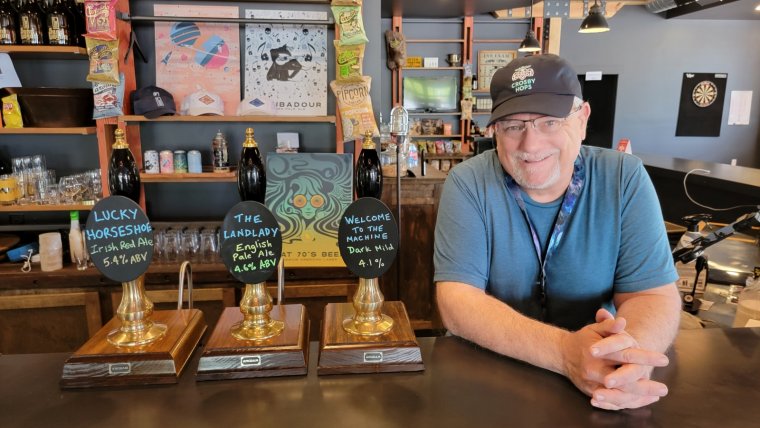

 Near the end of the COVID pandemic, Brick Store co-owner Dave Blanchard shared the idea of a small upstairs cask ale bar with his business partners. Firkins could be stored in the chilled vintage cellar, with an insulated pipe running through the wall to supply cask ales to hand-pump taps on a compact bar in the seating area at the top of the pub's stairs. Many people doubted how patrons would respond, but Blanchard proceeded with his plan. No one expected the impressive level of success that the Brick Store's beautifully decorated cask ale bar would achieve. Many brewers and locals enter the pub and head straight up to the cask bar to enjoy four real ales, soak in the beautiful English pub decor, and maybe watch a European football match on the TV behind the bar.
Near the end of the COVID pandemic, Brick Store co-owner Dave Blanchard shared the idea of a small upstairs cask ale bar with his business partners. Firkins could be stored in the chilled vintage cellar, with an insulated pipe running through the wall to supply cask ales to hand-pump taps on a compact bar in the seating area at the top of the pub's stairs. Many people doubted how patrons would respond, but Blanchard proceeded with his plan. No one expected the impressive level of success that the Brick Store's beautifully decorated cask ale bar would achieve. Many brewers and locals enter the pub and head straight up to the cask bar to enjoy four real ales, soak in the beautiful English pub decor, and maybe watch a European football match on the TV behind the bar. 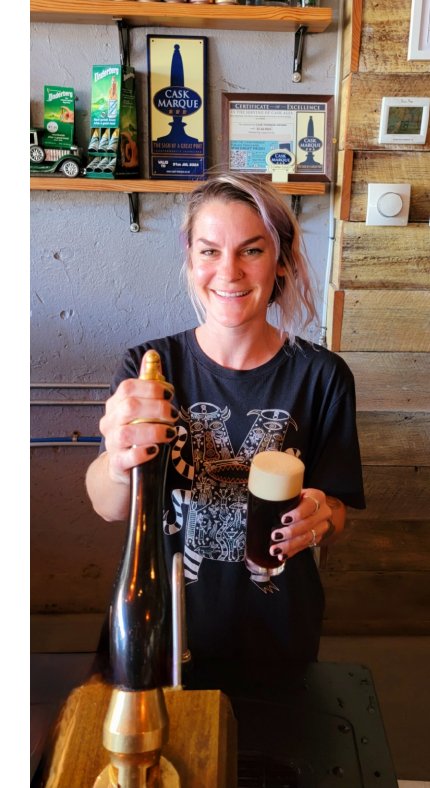 Generating Interest & Engagement
Generating Interest & Engagement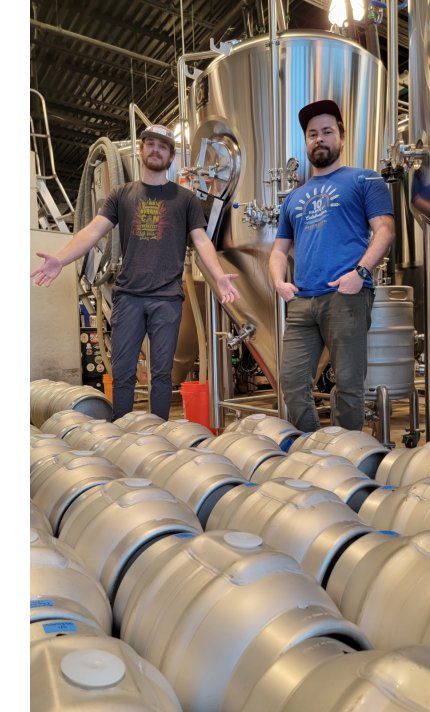 Cask Education is Key
Cask Education is Key



 Organized by Colorado's Brewers Association, the CBC offers educational programs and allows international and domestic brewers to come together to share ideas, make contacts, problem-solve and discover new solutions and resources—usually over a beer. CBC also forms the culmination of several blind judging sessions of the annual World Beer Cup that awards medals to the best world-class global beers in several categories. Judges in each category were given beer samples identified only by an anonymous number, and judge teams sniffed, tasted, discussed and decided on the top entries.
Organized by Colorado's Brewers Association, the CBC offers educational programs and allows international and domestic brewers to come together to share ideas, make contacts, problem-solve and discover new solutions and resources—usually over a beer. CBC also forms the culmination of several blind judging sessions of the annual World Beer Cup that awards medals to the best world-class global beers in several categories. Judges in each category were given beer samples identified only by an anonymous number, and judge teams sniffed, tasted, discussed and decided on the top entries.


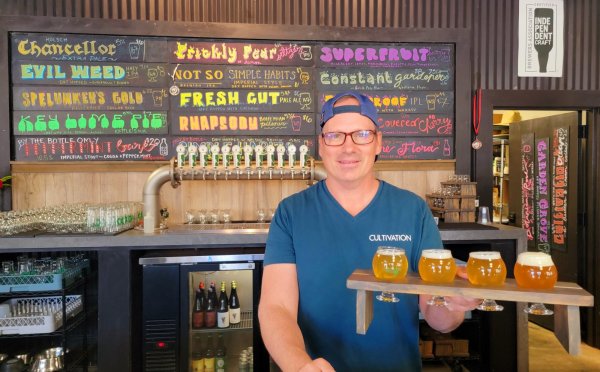
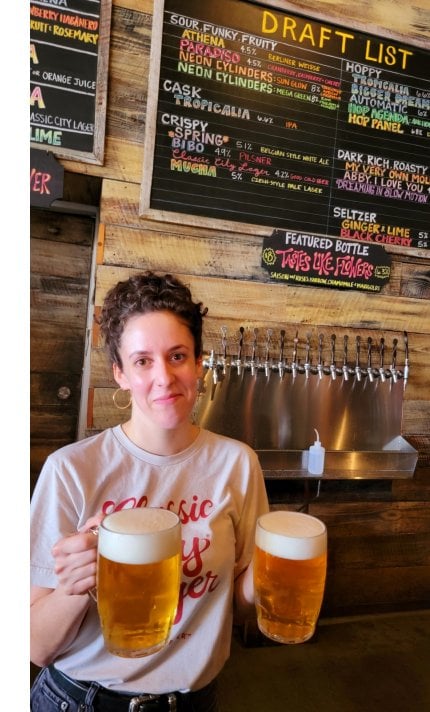 Creature Comforts Brewing Company
Creature Comforts Brewing Company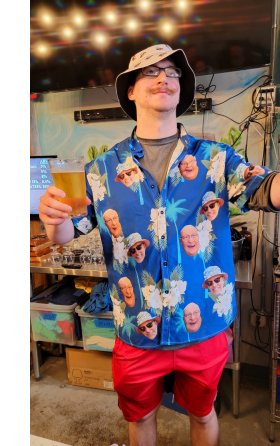 New Digs for Normaltown
New Digs for Normaltown

.png)















.jpg)
.jpg)
.jpg)